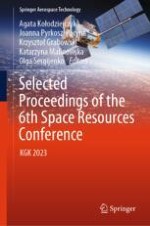This book collects advances, innovations, and applications in the field of space resources and exploration, as presented by international researchers at the 6th Space Resources Conference (KGK), held in Kraków, Poland on May 15-16, 2023. The conference serves as a forum for discussion on the state-of-the-art technologies applicable to current challenges of space exploration, the use of space resources to improve the living conditions of humans and protect Earth’s natural environment, and the latest research results on space resource extraction, transportation, manufacturing in space, and how to develop settlements on the Moon and Mars. Topics include bioastronautics and life support systems, Earth observation and sensors issues, space law, subspace missions, space industry, society and space, space education, and space structures design and operations. The book, which was selected by means of a rigorous peer-review process, presents a wealth of exciting ideas that will open novel research directions and foster multidisciplinary collaboration among different specialists.
